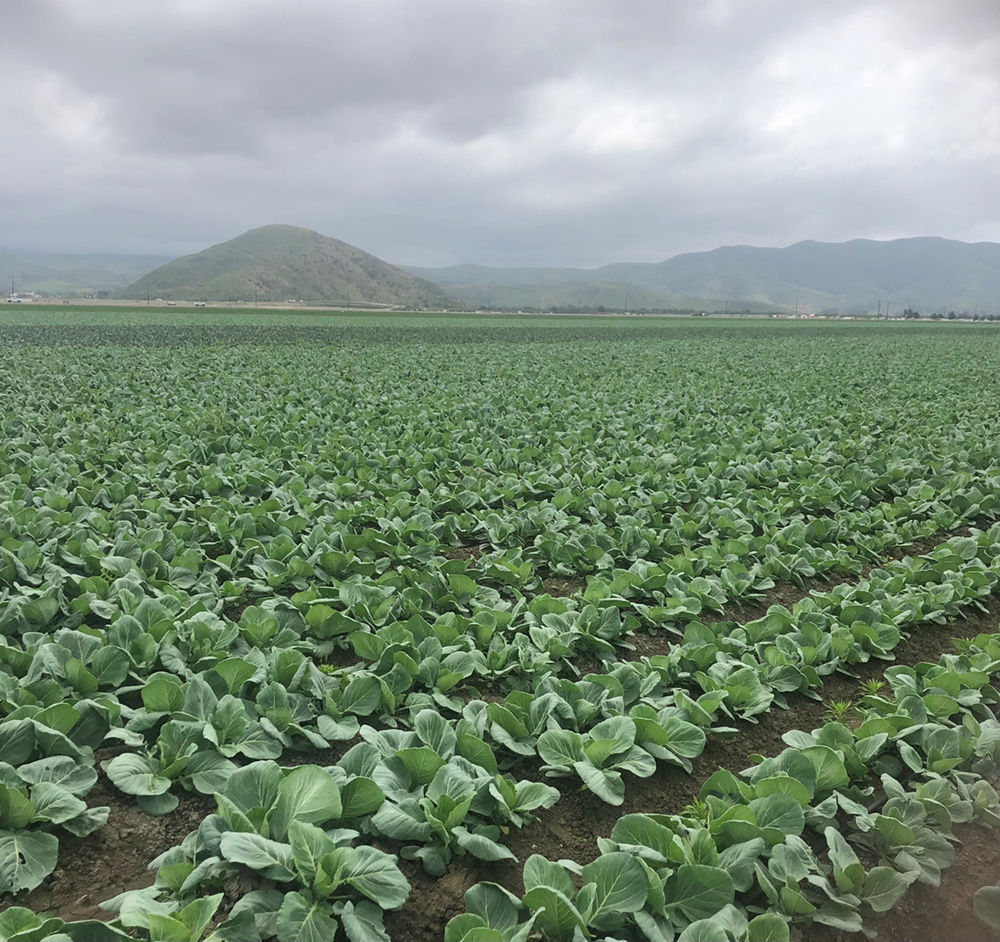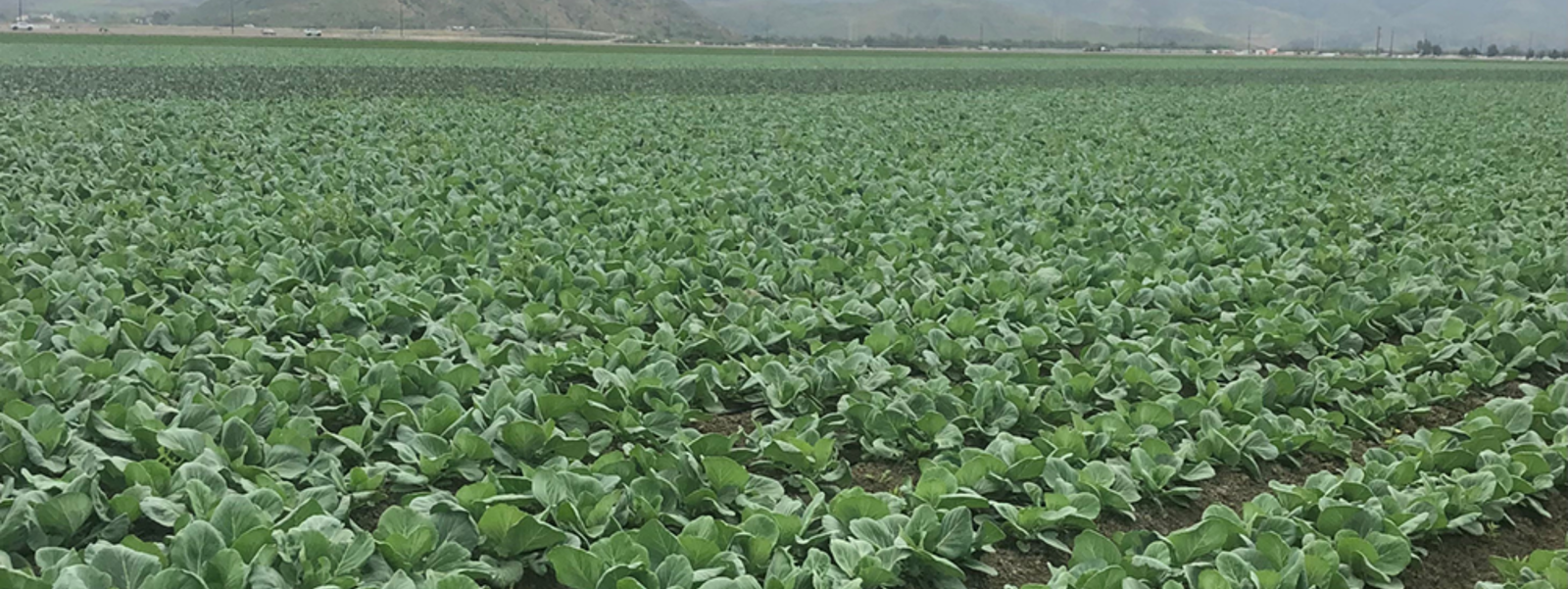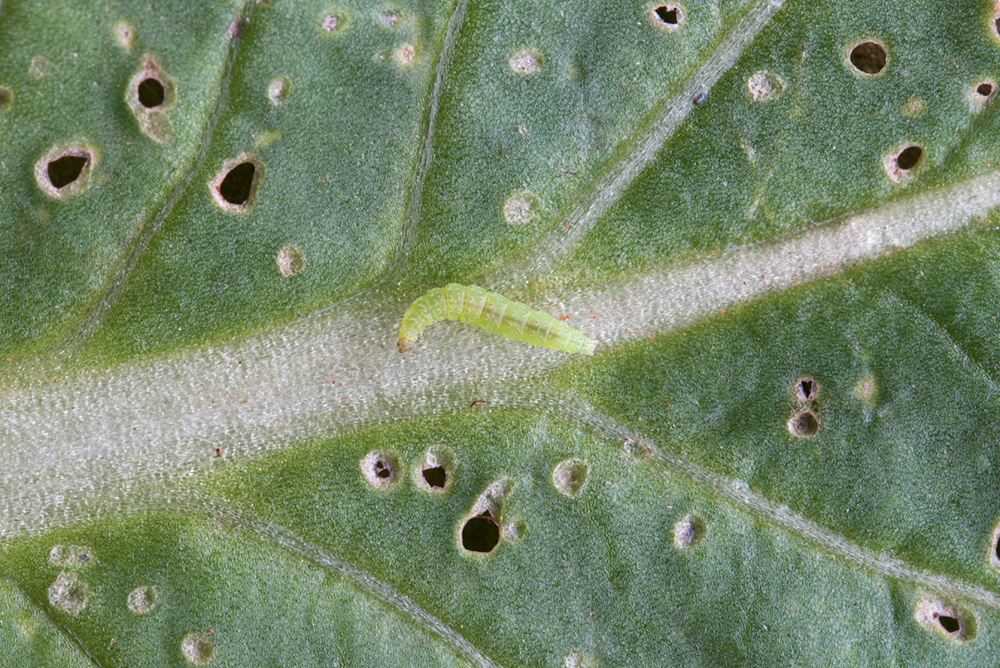Cabbage growers wage war on diamondback moth

Cabbage growers in Ventura County are partnering with researchers at the University of California to control populations of diamondback moths.
Photo/Rob McCarthy



By Rob McCarthy
Despite having wings, a diamondback moth isn’t much of a flier. That hasn’t stopped it from spreading across Ventura County where cabbage is in the ground much of the year.
California cabbage growers have dealt with the moth for two centuries, according to published research. However, a resurgence of the destructive pest is affecting farms along the Southern California coast, where cabbage production is highest and is ramping up ahead of the summer.
California is the nation’s top producer of cabbage, with Ventura and Santa Barbara counties leading the state. The region is also ground zero for the diamondback, which is attracted to leafy plants in the brassica family.
It can be cabbage or Brussels sprouts. A field of broccoli or a Chinese vegetable such as bok choy are welcome hosts. Yellow mustard, a weed that grows along roadways and near the Santa Monica Mountains in Ventura County, offers enough refuge and nutrition for diamondback moths to reproduce and restart the life cycle.
Starting in 2021, growers in the Camarillo-Oxnard area began noticing holes chewed in the leaves and flowers of cabbage transplants. Some blocks of cabbage damaged by diamondback moth larvae had to be disked.
Cabbage acreage in Ventura County dropped from 3,194 in 2020 to 2,851 in 2021, and the crop value fell from $37 million to $35 million. While cabbage plantings dropped further to 2,642 acres in 2022, rising prices lifted the crop value to $40 million, according to county crop reports.
Concerned about the continuing diamondback moth damage, growers approached Oleg Daugovish, University of California Cooperative Extension vegetable crops advisor in Ventura County. He established a monitoring program using pheromone-baited traps to catch adult males. The traps revealed accelerating levels of diamondback moths.
Daugovish said pesticides that area growers had relied on to grow market-ready cabbage and Brussels sprouts were becoming ineffective in treating the moths compared to results in other coastal areas in the state.
“It was just a matter of time,” Daugovish said. “The resistance was developed to just about every mode of action that we have.”
The diamondback moth is found everywhere cabbage is growing in Ventura County, making it California’s hottest spot to study and collect data. As a result, Daugovish is investigating potential integrated pest management steps that could complement new crop protection materials when they become available in the state.
One material not yet registered in California was effective in Arizona trials and will be tested in Ventura County, said UCCE staff entomologist Hamutahl Cohen. The product name is Plinazolin, which has the active ingredient isocycloseram for disrupting the moth’s nervous system.
“We are going to trial this product against a couple of local standard products to determine efficacy in controlling diamondback moth larvae,” Cohen wrote in an email.
Meanwhile, one Camarillo farm with sizable cabbage acreage planted for the summer harvest window experimented with releasing biologicals and sterile adult male diamondback moths from drones to try to manage the pest. But the results were unsuccessful.
“We got nothing from it,” said Rio Farms general manager Danny Pereira.
Two years ago, the farm was a hotspot. Last year, Rio Farms adjusted its planting and harvest schedules, so cabbage was in the ground by midspring, Peirera said. Crews waited until fall to replant, and the results were promising. “It’s hit or miss,” Pereira said.
Crop rotation is a best practice used elsewhere against the diamondback. Pereira said his farm managers and pest control advisors discussed potentially rotating out growing cabbage this summer to mitigate the threat. The farm team decided against it, mostly because of the presence of nearby fields of Brussels sprouts, another diamondback moth target.
A monitoring program by Daugovish’s team showed that warming temperatures in 2022 and 2023 appeared to trigger diamondback moth mating and new population growth. Rio Farms uses bait traps to keep tabs on the pest’s pressure. By mid-April, the number of male moths in the traps was rising, Pereira said.
Diamondback moth researchers in Arizona, Hawaii, Georgia, North Carolina and Florida shared findings with Daugovish on successes controlling the row-crop pest as part of integrated pest management approaches.
He is now exploring multiple approaches for targeting the diamondback moth.
Daugovish said his research team already knows of three species of parasitic wasps that can be deployed as biocontrol organisms to outcompete diamondback moth larvae in Ventura County. The next step is finding how to preserve the beneficial wasps on and nearby farms.
Another technique that Daugovish said shows promise is to plant certain mustard species as “termination crops” on which diamondback moth females lay eggs that don’t develop into adults.
In addition, testing is set for the fall for another potential remedy: pheromone-based mating disruption.
UCCE researchers have also applied for grants to test diamondback moth resistance to varied insecticide applications to prevent “useless sprays.”
Because of the intensity of cole-crop production in Ventura County, what works in another part of the state won’t necessarily transfer across county lines—meaning that lots of field work and testing lie ahead, Daugovish said.
(Rob McCarthy is a reporter in Ventura County. He may be contacted at robmccarthy10@yahoo.com.)




